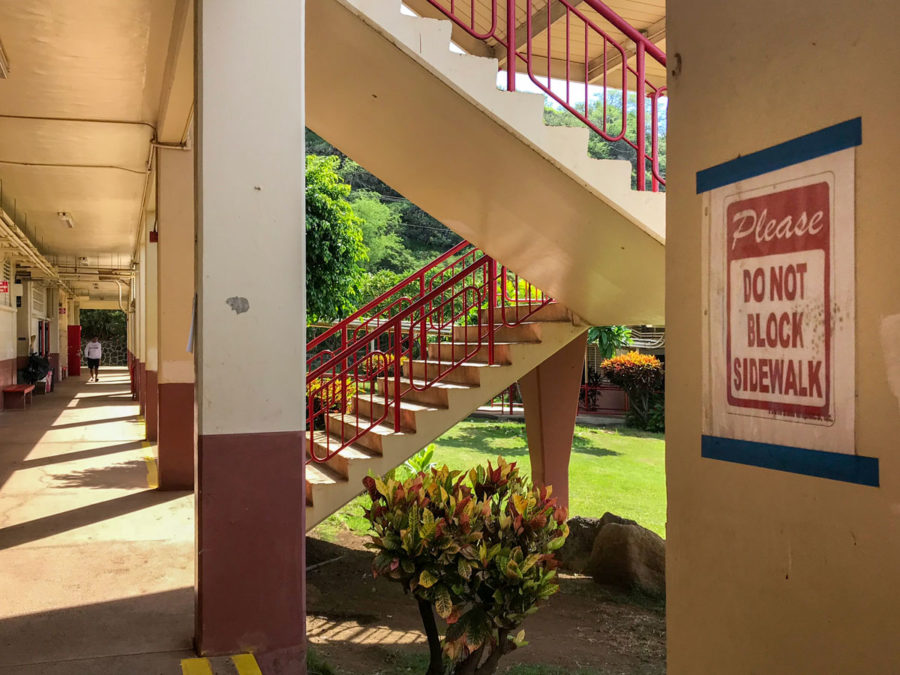The Walkway Problem
The walkway at A building displays a sign placed by Kalani admin reading “Do Not Block Sidewalk” to help direct the flow of traffic. Certain areas around campus have become popular hangout spots and many people on campus feel walkway and stairwell crowding has become a problem. Photo by Jake Nakamura 2018.
October 7, 2018
Kalani receives more students every year and there is a limited number of places to hang out during lunch and on breaks. Students feel they don’t have many options on campus.
During lunch and recess, there is limited space in the cafeteria. Students say there are only a couple of places to go, like the stairwells or the walkways. However, this results in students sometimes completely blocking the way for those who are trying to pass.
Mrs. Sumikawa’s room at A building is the closest to the cafeteria, and she says she always sees students right outside of her office during mornings, recess, and lunch.
“Faculty have told me that they sometimes go around an entire building to avoid a stairwell,” Mrs. Sumikawa said. “They ask the students to move and they don’t really move.”
Mrs. Sumikawa has suggested designated places for the students so they won’t always be out in the hallway. For example, the tennis courts. This worked for a while, but that area was deemed “too hot” by students and they eventually returned to their normal hangouts.
The administration, such as Vice Principal Wong, has noticed this problem and is currently trying to find an alternative place for students.
“There is a discussion about purchasing more furniture, including a ‘senior seating area’ between the administration and F buildings,” Mr. Wong said. “Adding picnic tables around campus last year has also helped to alleviate the problem some.”
Vice Principal Wong put up signs which say “Please do not block the sidewalk.” He placed the signs not only for students who block the sidewalk, but also to help teachers direct traffic.
“The signs by A building were posted so that adults can refer to them when directing students to make way for foot traffic,” he said.
However, others, like Mrs. Sumikawa, do not believe the signs help.
Although crowding students can sometimes be a nuisance, Mr. Wong believes it is a “good problem” because of how Kalani is growing.
“A larger student body means increased diversity, enriched school programs, clubs, and athletics,” he said.
Mrs. Isono usually walks around during recess and lunch and can see where the students are hanging out, which is mostly A building and the counselors’ offices. Although she does not believe that there is a walkway problem, she is open to asking the students if they believe it is.
“Faculty and staff need to hear students’ voices. Perhaps a survey will be an option,” Mrs. Isono suggested as a way to address the issue.


